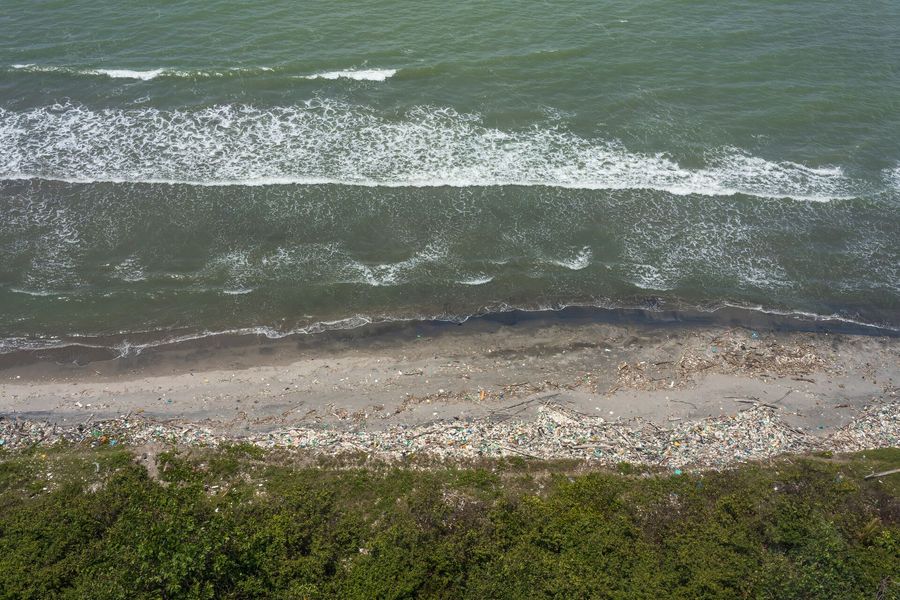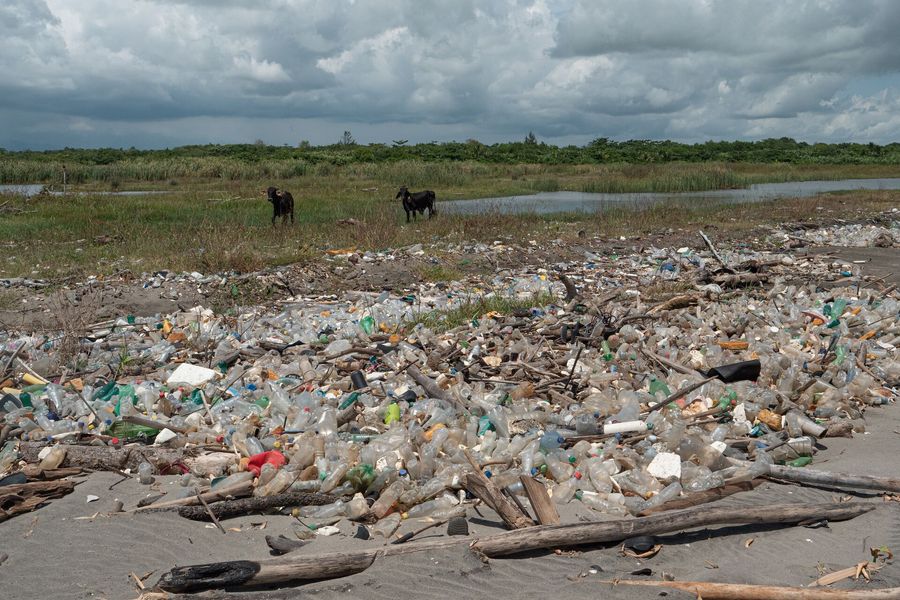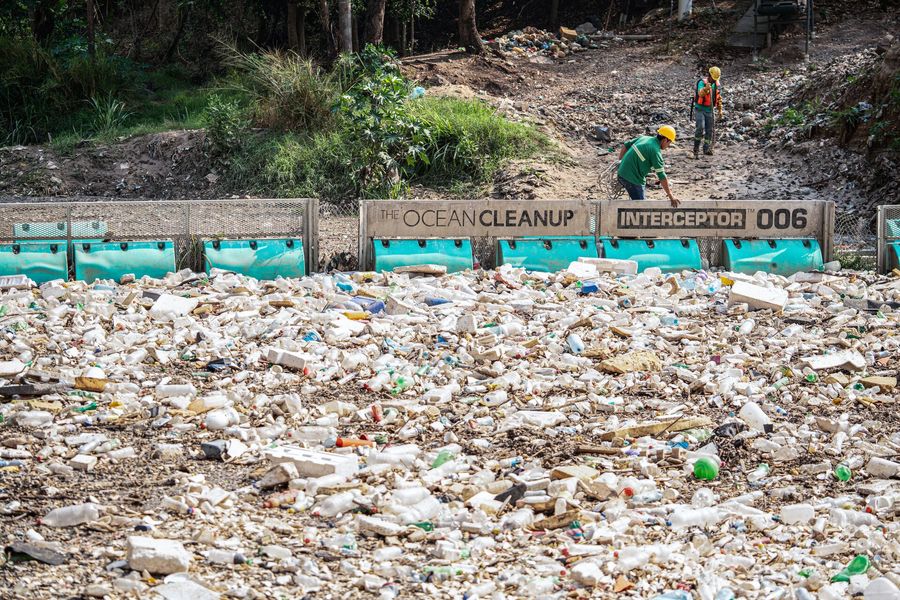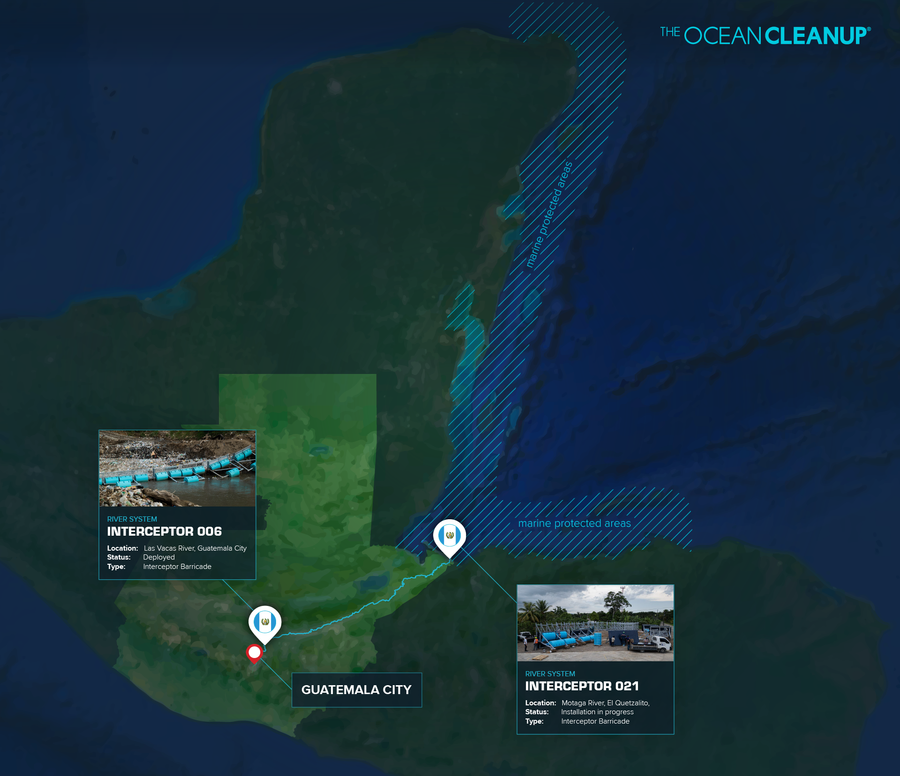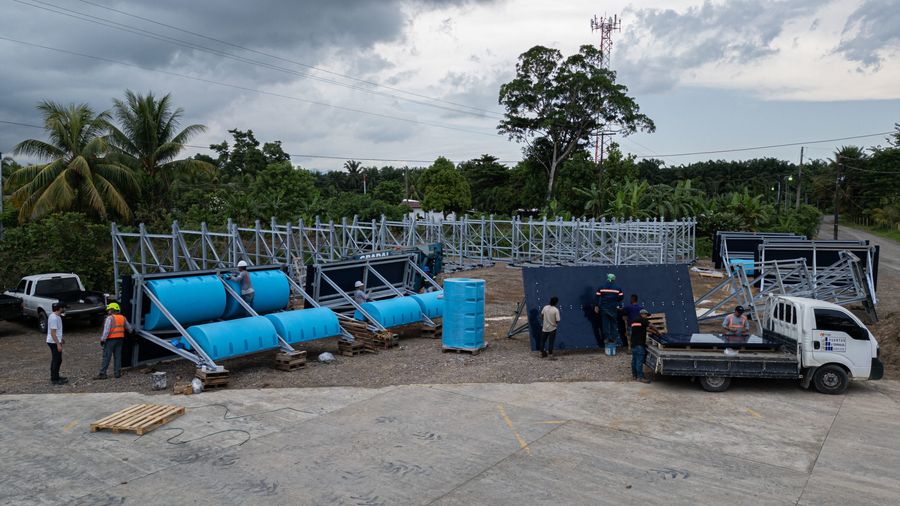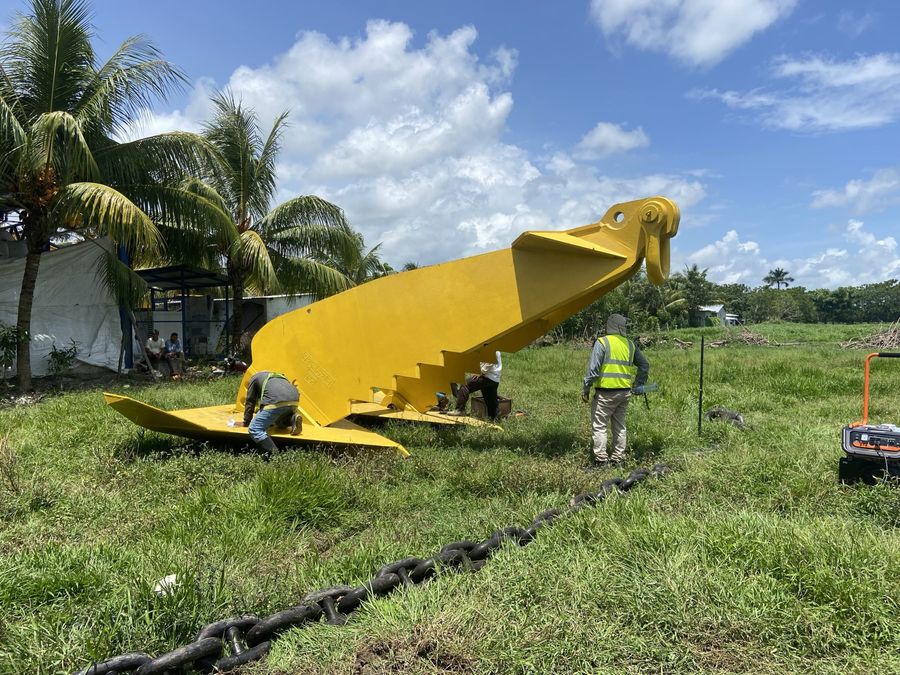
Introducing Interceptor 021: Could this be the end of plastic pollution in an important part of the Western Caribbean?
Back to updates- The Ocean Cleanup is deploying an additional Interceptor in Guatemala’s Rio Motagua basin.
- The goal of this new deployment is to restore the Gulf of Honduras to its original state.
- This new project is a collaboration between The Ocean Cleanup and Guatemala’s Ministry of Environment (MARN).
The Gulf of Honduras – a piece of ocean wedged between Honduras, Guatemala, Belize, and Mexico’s Yucatan peninsula – has historically been one of the most plastic-polluted places on earth. Every year during the rainy season thousands of tons of plastic wash down the Rio Motagua and end up in this part of the Western Caribbean Sea.
This pollution wreaks havoc on the area’s natural environment, including more than two dozen Marine Protected Areas (MPAs) and the Mesoamerican Reef – the second largest coral reef on earth after the Great Barrier Reef. It also impacts the livelihoods of thousands of people who depend on tourism and fishing in the region.
Since 2019, The Ocean Cleanup has been working to address this problem. After several attempts, we finally achieved success in May 2023 with the deployment of Interceptor 006 in Guatemala’s Rio Las Vacas (the tributary which connects Guatemala City with the Rio Motagua). With it, we have since prevented over 10,000,000 kg of trash (equivalent to over 2200 truckloads) from flowing to the Gulf of Honduras.
However, our job is not done yet. Interceptor 006 is deployed just upstream of a hydropower dam. This location was chosen because the presence of the dam dampens the flow of the river and thus allows us to efficiently intercept the plastic. However, occasionally the spillway of the dam is opened, causing high flow speeds of up to 7.5 m/s. In such conditions, we are unable to retain the plastic.
And while Interceptor 006 is downstream of the main sources of pollution, there are several other small cities located between it and the sea, which may also contribute to the problem.
All things considered, we estimate that we are currently stopping about 60-70% of the pollution; a big step forward, but not yet enough to return the Gulf of Honduras to its original, pristine state.
INTRODUCING: INTERCEPTOR 021
To address the remaining leakage, we have now started construction of Interceptor 021. This new deployment will be located in a town called El Quetzalito at the mouth of the Rio Motagua, and our hopes are high that this will have a significant impact on the remaining pollution currently reaching the Gulf of Honduras.
To accommodate for the size of the river, the flow speeds we can expect and the need to withstand the impact force of tree trunks hitting it, we are introducing a new type of Interceptor to our technology portfolio: the Interceptor Barricade XL. This new Interceptor is a larger, tougher version of the Interceptor we deployed in the Rio Las Vacas. The system measures 158 meters in length and has a draft of about 1 meter. This makes it the largest Interceptor we’ve deployed to date.
This latest project is a collaboration with Guatemala’s Environmental Ministry (Ministerio de Ambiente y Recursos Naturales de Guatemala, or MARN). MARN already operates a plastic collecting and sorting facility in El Quetzalito, and will take responsibility for the operations and waste management.
Construction works for the project have already commenced. It’s now a race against the clock for our team, partners and contractors to be operational in time for the second part of this year’s rainy season.
If all goes according to plan, the combined impact of our existing deployment in Rio Las Vacas and this new deployment should be enough to get the job done.
To stay up to date, subscribe to our newsletter or follow us through our socials @theoceancleanup through the links in the footer.



